Strawflower - Learn How to Grow Beautiful Everlasting Flowers
Strawflowers, also known as _Helichrysum_ are plants from the Asteraceae family. Regardless of the variety, each prefers warm regions. The plant is a precious element of bouquets and garden arrangements. Additionally, its healing properties have been in use for many years. The plant is easy to grow. Because of this, it's often picked by beginner gardeners.
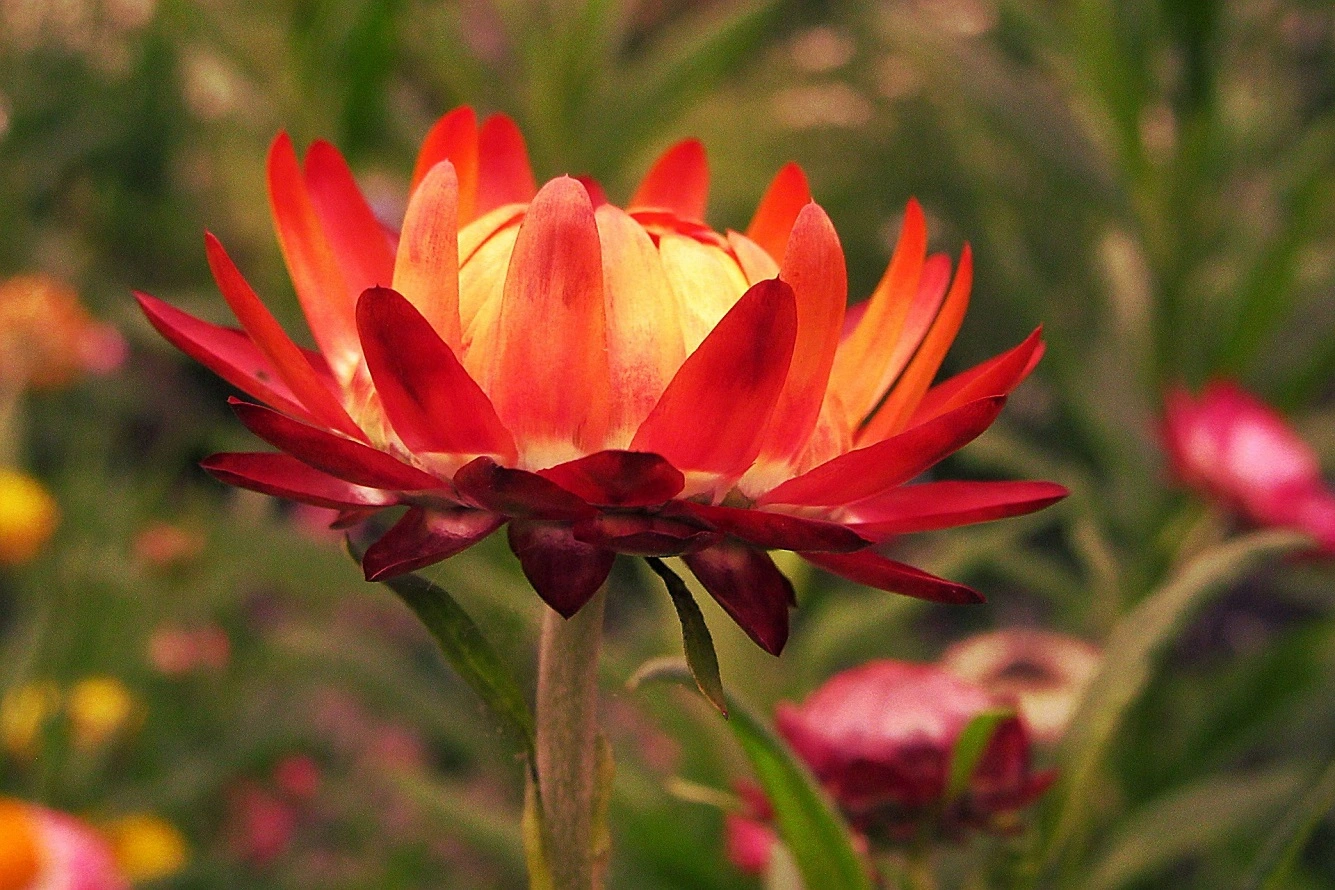
Strawflower – what kind of plant is it?
Gardeners often refer to strawflower as golden everlasting. The flower’s scientific name is Xerochrysum bracteatum. It belongs to the group of annual plants which can grow up to 1 meter tall. Its stems develop many branches and are relatively strong, with lanceolate leaves growing at the sides.
The bloom time of strawflowers starts at the beginning of July and lasts until October. That’s when the plant develops a characteristic inflorescence of a 5 cm (ca. 2 in) diameter. The flowers have different colors, depending on the variety. Golden everlasting flower grows naturally in Australia, but it became popular everywhere in the world thanks to its properties.

What does everlasting flower look like?
The plant’s appearance depends mostly on the particular variety. The plant grows from 20 to 100 cm (ca. 8-39 in) tall. The base variety develops narrow and lanceolate, dark-green leaves. Strawflower blooms with characteristic flowers. Depending on the cultivar, their colors, as well as the shape of the leaves differ.
The most popular strawflower varieties
Strawflower is a popular plant available in different varieties. The most popular strawflowers include:
- Silvery White – it has a characteristic dense habit and narrow, sliver leaves; the plant develops a much stronger scent than the base variety; it grows up to 30-40 cm (ca. 12-16 in); it requires extra protection in winter; the variety prefers sunny locations with dry and rocky soil;
- Nana – it’s a dwarf variety with silver leaves; this cultivar prefers full sun, and its flowers are yellow during the blooming season.
The base strawflower varieties differ in the color of their leaves. Here are the most noteworthy types:
- Golden Leaved,
- Bicolor Yellow Green Leaved,
- Blue Green Leaved.
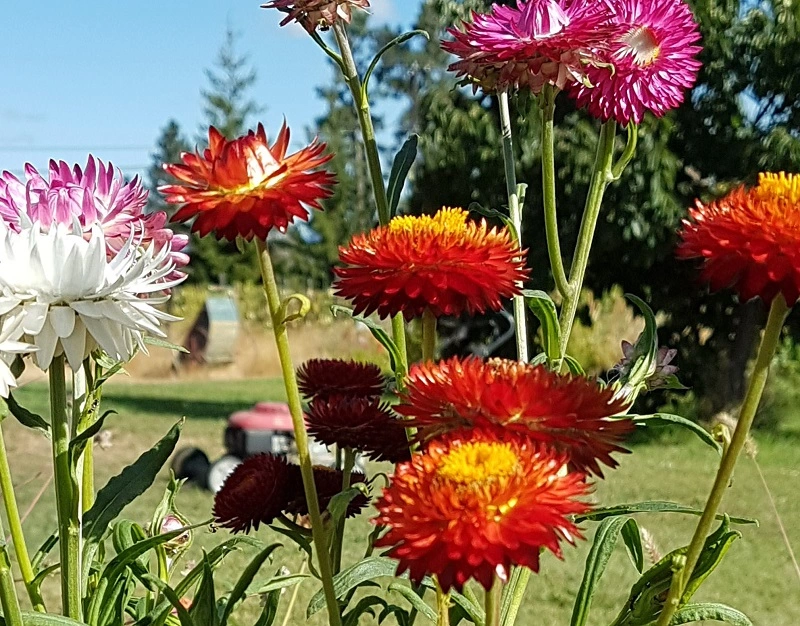
Strawflower – plant’s benefits
Xerochrysum bracteatum is a perfect flower to grow in a yard. It’s also a brilliant addition to rock gardens. Dried strawflowers are a common element of beautiful bouquets. But everlasting plant has other uses as well.
Strawflower oil has been in medicinal use since time immemorial. It’s used in skin care, especially for couperose skin treatment. It also speeds up wound healing and scar tissue formation – thanks to its regenerative properties. Strawflower oil reduces the number of free radicals which are responsible for processes like skin aging.
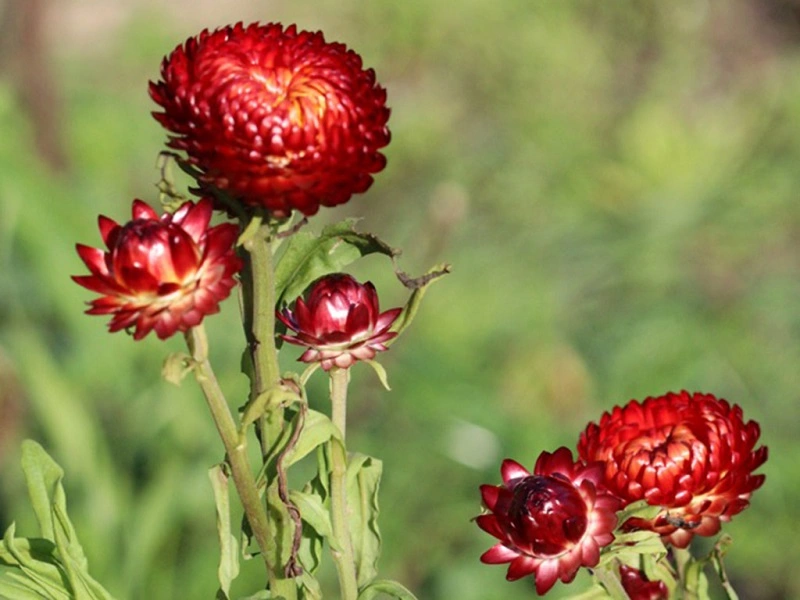
What are the growing requirements for strawflowers?
The plant is very easy to grow – even for beginner gardeners. It should be planted at the beginning of May. When picking a location, find a place with a very good sun exposure. Strawflower prefers permeable soils, best if sandy and with humus content. The ground should be slightly damp and rich in all nutrients needed for its proper growth.
The basic strawflower plant case involves monitoring its surroundings. Any weeds have to be promptly removed.
Everlasting plant care – watering and trimming
Strawflowers require regular, not too intense watering. The watering frequency should be greater if the plant is growing in a container. The plant needs watering only when the upper layer of the soil has dried. Make sure not to wet the leaves, as it might cause the development of harmful fungi.
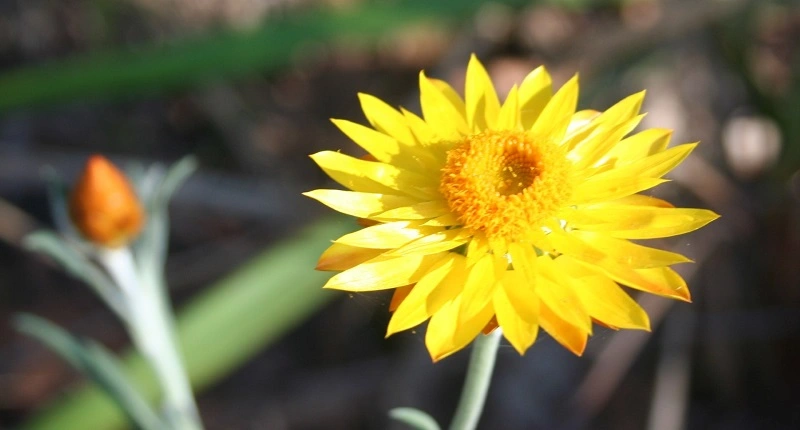
Strawflower – how to fertilize the plant
Everlasting doesn’t require intense fertilizing. But if you want to achieve the best results, you can decide on multi-ingredient fertilizers to provide all the necessary nutrients. Use the mix once every week or two weeks.
Strawflower – winter care
Everlasting flower doesn’t tolerate low temperatures. Make sure to move it into a cold interior for winter – with an average temperature of 10-15°C (50-59°F). The place should also be bright enough. With such conditions provided, the potted strawflower is likely to survive until the next season.
Hardier varieties can be left in the garden for winter. Just make sure to secure them against frost.
How to propagate strawflowers?
Strawflower can be propagated in two ways. Collecting the seeds is the easier method. You can plant them directly in the prepared location, making sure to keep an adequate spacing. Everlasting flower can also be multiplied by using top cuttings. They have to be collected in spring and rooted before you can plant them in the ground.
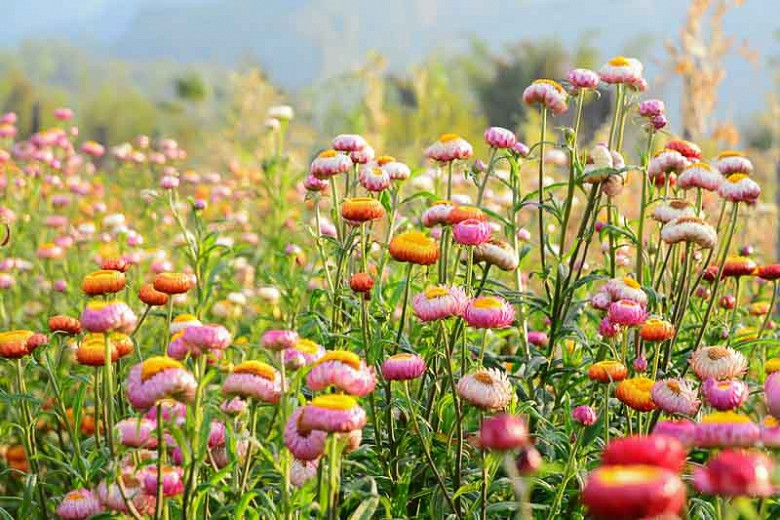
📍 What does strawflower look like?
Strawflower is a small plant with colorful flowers. They can be yellow, orange, red, pink and purple, depending on the particular variety. The leaves are typically narrow and lanceolate.
📍 Everlasting flower care – how to propagate the plant?
Strawflowers are easy to propagate. Using top cuttings is the simplest way to multiply this plant. Collect and root them in spring – this applies to plants grown indoors. Outdoor everlastings have to wait until the last frost passes.
📍 When to pick strawflowers for bouquets?
Strawflower's blooming season lasts from July to October. Plan picking these flowers for the beginning of the process. Note the plant is a protected species in some countries, so make sure not to pick wild strawflowers.
📍 When to plant strawflowers?
If you want to sow strawflowers, schedule this task for the beginning of May. Remember about the spacing of 20-30 x 50 cm (ca. 10 x 20 in). The first everlastings should begin blooming at the beginning of July.
Featured articles




